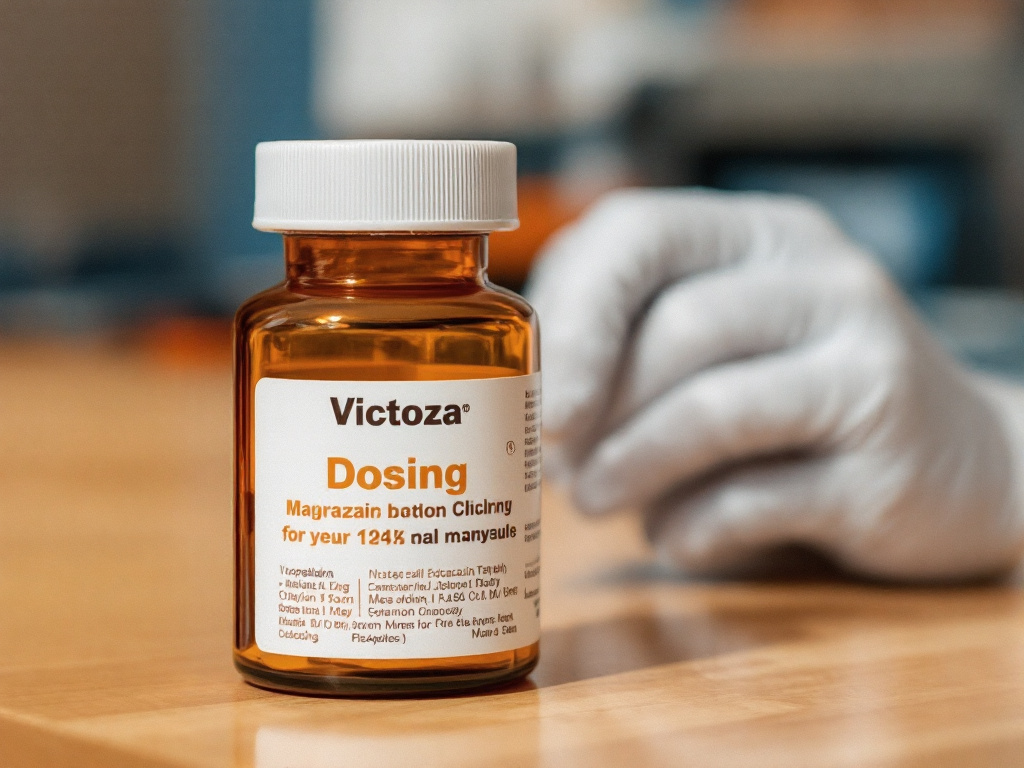Victoza Dosing Simplified: Get the Most from Your Medication
If you’re looking for a friendly, no-nonsense guide to Victoza dosing, you’re in the right place. This once-daily medication can help manage type 2 diabetes when used alongside a healthy diet and exercise plan. In this ultimate guide, you’ll learn how Victoza works, how to start at the right dose, and what to do if you run into side effects or miss an injection.
Understand Victoza’s Role
Victoza is the brand name for liraglutide, a drug that helps regulate your blood sugar throughout the day. Studies show Victoza lowers both fasting and post-meal glucose levels, reducing your A1C over time (Pharmacy and Therapeutics). Although it’s not officially approved for weight loss, some people do notice slight weight reductions as a side benefit (Healthgrades).
Begin With The Right Dose
Starting off with the correct dose sets the stage for smoother blood sugar control. Doctors typically follow a schedule like this (Medical News Today):
- 0.6 mg once daily for 1 week
- Increase to 1.2 mg once daily after that first week
- If needed, raise it to 1.8 mg once daily after another week
For most adults, 1.8 mg is considered the maximum effective dose. Children 10 years and older often follow the same steps, but always confirm with a pediatric specialist first. Each Victoza pen has a total of 18 mg in 3 mL of solution, so the total number of injections you get depends on your daily dose.
Why Start Low?
The lower initial dose gives your body time to get used to Victoza, especially if you experience gastrointestinal (GI) side effects such as nausea and vomiting. By easing in, you can minimize the bumps in the road before ramping up to a dose that keeps your blood sugar in check.
Adjust For Side Effects
Mild side effects can pop up as you move from one dose to the next. GI issues often fade after a few weeks, but if 1.8 mg seems too rough, talk to your doctor about trying an in-between dose like 1.5 mg (source). This compromise can help your system adapt gradually.
If you’re using other diabetes medications alongside Victoza, you may have overlapping side effects. For instance, people on metformin dosage sometimes experience stomach troubles, too. Checking in with your healthcare provider can help you spot whether Victoza or another drug is the culprit.
Manage Missed Doses And Routine
Life happens, and you might skip a dose by accident. If it’s just one day, take your next injection as scheduled. Do not double-up. If you miss more than three days in a row, most guidelines suggest restarting at 0.6 mg, then building back up (NCBI). This gradual reintroduction helps limit any renewed side effects.
As for injection technique:
- Rotate sites (abdomen, thigh, or upper arm) to avoid irritation
- Keep track of pen usage so you don’t run out unexpectedly
- Store pens at the recommended temperature for maximum effectiveness
Consider Renal Function Adjustments
In general, Victoza does not require extra tweaks for kidney function, and clinical trials have shown it remains safe and effective in older adults (Medical News Today). However, if you have chronic kidney disease and take other medications such as a sulfonylurea or metformin and alcohol considerations, your doctor may suggest further dosage changes. Regular labs and good communication with your healthcare team help ensure everything stays balanced.
Key Takeaways And Next Steps
- Begin at 0.6 mg daily, then increase to 1.2 mg or 1.8 mg after at least one week at each level
- Watch for GI side effects, and consider a halfway dose if needed
- If you miss a dose, resume your normal schedule; speak to your doctor about restarting if you miss several days
- Remember to rotate injection sites to avoid irritation
By following these steps, you’ll be well on your way to getting the most out of your Victoza dosing routine. If you’ve got a story or tip to share about managing Victoza side effects, feel free to leave a comment. Your experience could help someone else navigate their journey more comfortably!








Leave a Reply